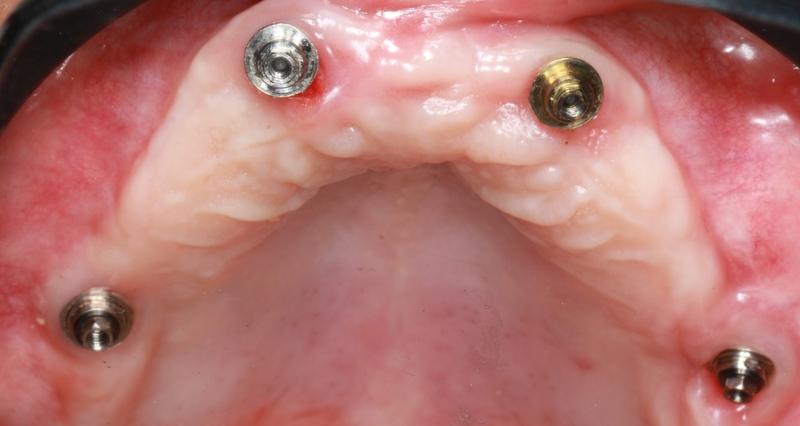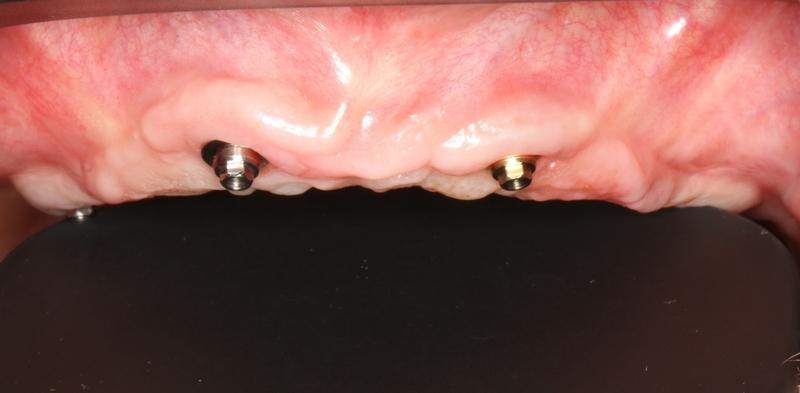Factors associated with complications at zygomatic implants: Retrospective analysis
Introduction
Various techniques have been described to treat the edentulous atrophic maxilla, including the use of grafting of the maxillary sinus floor, angled implants in the para-sinus region, implants in pterygoid apophysis, short implants, wide implants, and zygomatic implants (1,2). Whether used as the primary or as the “rescue” implant in the reconstruction of the atrophic maxilla, the zygomatic implants afford a predictable solution that establishes posterior support using a more distal bone site (3,4). ORIS, a recently introduced classification to evaluate the success of treatment with zygomatic implants, considers 4 variables: Offset measurement to evaluate prosthetic positioning, rhinosinus status, inflammation permanence to evaluate soft tissue health, and stability of the zygomatic implants (4).
The aim of the study was to evaluate the success and complication rates associated with zygomatic implants using the ORIS criteria as well as to analyze factors that associate with implant failures and complications.
Key Results
- Only 4 of 217 zygomatic (122 NobelZygoma 45°, Nobel Biocare) implants failed, resulting in a cumulative implant survival rate of 98.16% after a mean follow-up of 3.5 years.
- Implant survival showed a statistically significant association with site type (extraction versus healed), operating surgeon, and patient smoking status, but not implant type.
- Rhinosinus pathologies were associated with the use of Bichat fat pad, Chow technique, and implant type.


CITATION
Presented at 29th Annual Scientific Meeting of the European Association for Osseointegration (EAO Uniting Nations through Innovations), 29 September – 1 October 2022.
Bonnet R & Leroy C. (September 2022) EAO-351 /PO-57-CL_PIB | Factors associated with complications at zygomatic implants: Retrospective analysis. In Special Issue: Uniting Nations through Innovations by the European Association for Osseointegration 28 September-1 October 2022, Clin Oral Impl Res; Vol 33 (S24): 104-105. https://onlinelibrary.wiley.com/doi/full/10.1111/clr.14001
References
1. Chrcanovic BR, Pedrosa AR, Neto Custódio AL. Zygomatic implants: a critical review of the surgical techniques. Oral Maxillofac Surg. mars 2013;17(1):1‑9.
2. Malevez C. [Zygomatic anchorage concept in full edentulism]. Rev Stomatol Chir Maxillofac. sept 2012;113(4):299‑306. 1.
3. Bedrossian E. Rescue implant concept: the expanded use of the zygoma implant in the graftless solutions. Oral Maxillofac Surg Clin North Am. mai 2011;23(2):257‑76, vi.
4. Aparicio C, López-Piriz R, Albrektsson T. ORIS Criteria of Success for the Zygoma-Related Rehabilitation: The (Revisited) Zygoma Success Code. Int J Oral Maxillofac Implants. avr 2020;35(2):366‑78.
Can you express the percentage of peri-implant tissues experiencing signs of mucositis and peri-implantitis?
Survival rates can be misleading as they do not consider peri-implant disease, and implant failure can be catastrophic when it effects deep tissues and causes the failure of adjacent bone and the prosthesis. Can you express the percentage of peri-implant tissues experiencing signs of mucositis and peri-implantitis?
Survival rates can be misleading as they do not consider peri-implant disease, and implant failure can be catastrophic when it effects deep tissues and causes the failure of adjacent bone and the prosthesis. Can you express the percentage of peri-implant tissues experiencing signs of mucositis and peri-implantitis?
In reply to Can you express the percentage of peri-implant tissues experiencing signs of mucositis and peri-implantitis? by Emil Svoboda
Dear colleague,
Peri-implant pathology or infectious reactions (I) was observed in 32 implants (14.75%), including 23 recessions (10.60%), 11 cases of bleeding on probing (5.07%), 2 cases of mucositis (0.92%). There were also 4 instances of oroantral communication (1,84%), which were treated with meatotomy and led to a decrease in symptoms.
Bests regards
Dr BONNET Raphael
In reply to Can you express the percentage of peri-implant tissues experiencing signs of mucositis and peri-implantitis? by Emil Svoboda
Meatotomy?